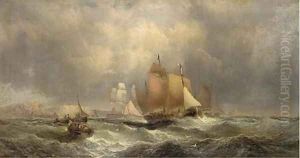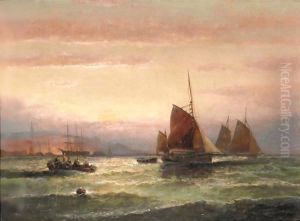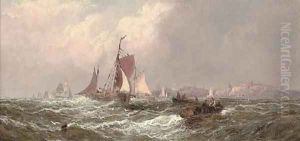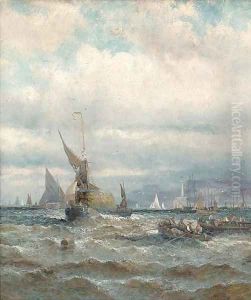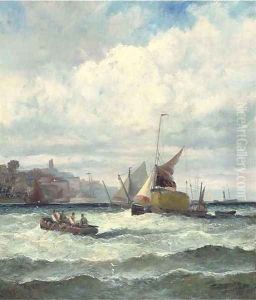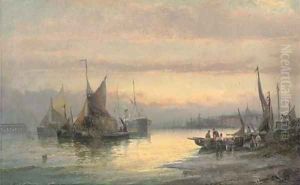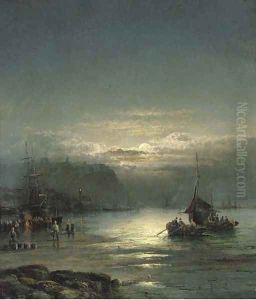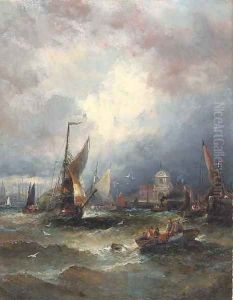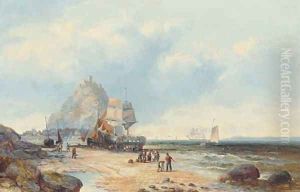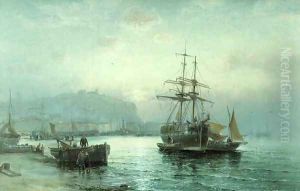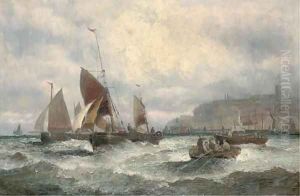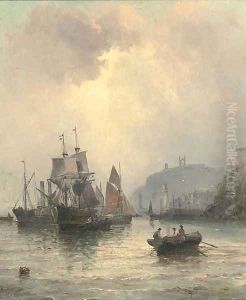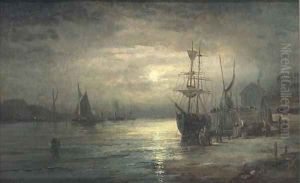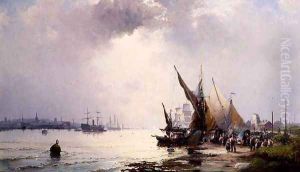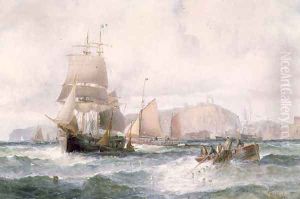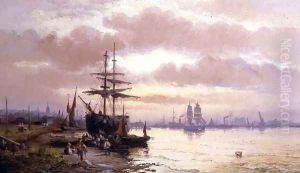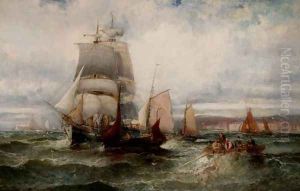William A. Thornley or Thornbery Paintings
William Anslow Thornley, often known as William A. Thornley or Thornbery, was a British artist born in 1857. He was especially noted for his marine paintings, depicting ships and coastal scenes with a remarkable attention to detail and a keen sense of atmosphere. His works often captured the changing moods of the sea and sky, and he was particularly adept at illustrating the effects of light on water.
Thornley's paintings typically feature sailing vessels, from grand ships to humble fishing boats, set against expansive seascapes. He had a talent for rendering the intricate rigging and bustling activity aboard these vessels, bringing the scenes to life with a sense of movement and vitality. His works are characterized by their luminous quality and the skillful use of color to convey different times of day and weather conditions.
Despite the popularity of his maritime subjects, little is known about Thornley's personal life or training. He worked during a period when marine painting was highly fashionable, influenced by earlier masters of the genre such as J.M.W. Turner. Thornley's art reflects this tradition, yet it also possesses a distinctive style that has garnered appreciation among collectors.
Thornley lived and worked in London, where he exhibited at various venues including the Royal Academy and the Royal Society of British Artists. His paintings were widely reproduced as prints, which contributed to his reputation during his lifetime. Today, his works can be found in private collections and occasionally appear at auction, where they continue to be sought after for their charm and technical mastery.
He continued to paint and exhibit his work until his death in 1935. Over the decades, Thornley's paintings have maintained their appeal, offering viewers a glimpse into the maritime heritage of Britain and the timeless allure of the sea.
